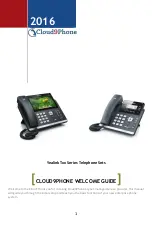
D9068
|
Operation and Installation Guide | 1.0
Overview
.
Bosch Security Systems, Inc. | 3/13 | F01U071094-0
7
7
1.0 Overview
1.1 System Overview
The D9068 Fire Communicator is a
complete communicator for use with
compatible FACPs. Alarms and
communications to the D9068 are
accomplished using dry contacts or open
collector outputs.
The D9068 also includes:
12 VDC or 24 VDC operation
Multiple data protocols (Modem IIIa
2
,
Contact ID, SIA, and 4/2)
100-event history buffer
Five programmable discrete wire
inputs (Class B)
Dual telephone line interface
Option bus interface for built-in
programming using the D7033/FMR-
DACT-KEYPAD Keypad Programmer
Form C relay output for trouble
LEDs for heartbeat, system trouble,
and telephone line trouble (one per
line)
Serial port for connection to other
FACPs (such as the Bosch D8024 and
D10024/D10024A Analog FACPs)
Real-time clock
1.2 Features and Specifications
1.2.1 Power
Do not share power from the
FACP with the D9068 and other
peripheral devices.
Table 2: Power Specifications
Power Specifications D9068 Value
Input voltage range
(use power-limited
source)
10.2 VDC to 28 VDC
for filtered DC
12 VRMS to 28 VRMS
for unfiltered DC
Standby current
150 mA Maximum
Alarm current
190 mA maximum
Although the D9068 can withstand short
power losses up to 5 min, connect it to
an unswitched, uninterrupted power
source.
If the D9068 loses power for more than
5 min:
The history buffer might clear and
all stored events are lost.
The output (report) buffer might
clear and all pending reports are
lost.
Alarms initiated before the power
loss might reset. If the alarm
conditions persist when power is
restored, new alarms can be
generated.
System time might reset to its
default setting.
If a power loss occurs,
programmed settings such as
input point configuration,
telephone numbers, and account
number remain intact.
1.2.2 System Supervision
Watchdog:
The D9068 is supervised with
a hardware watchdog circuit. Failure of
the control program causes a hardware
reset within 2 sec. The trouble relay
is released for the duration of the
reset. Generally, this relay is held
energized.
Self Testing:
Occasionally, the dialer
(DACT), EEPROM memory, input points,
and telephone lines are automatically
tested. The EEPROM checksum is verified
every 10 min. If the EEPROM checksum
fails, a trouble condition is
annunciated locally and a Trouble
Report is sent.
1.2.3 Inputs
The D9068 supports five inputs that can
be activated by dry contact relays or
open collector outputs. The open
collector outputs from the fire panel
must be below 1.3 VDC in alarm and must
sink 5 mA minimum. Refer to
input point specifications.








































